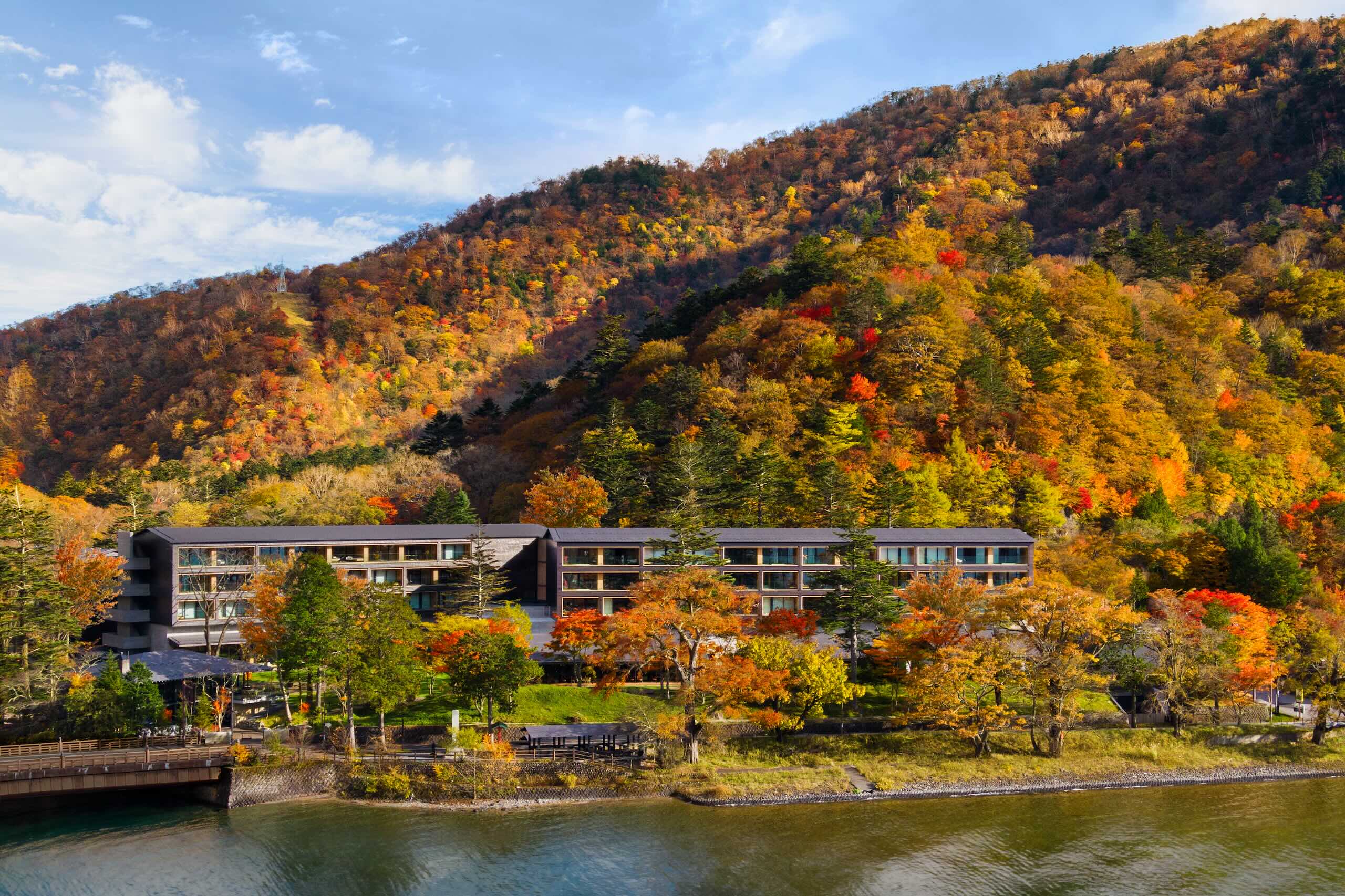Welcome to Checking In, a review series in which our editors and contributors rate the best luxury hotels based on a rigorous—and occasionally tongue-in-cheek—10-point system: Each question answered “yes” gets one point. Will room service bring you caviar? Does your suite have its own butler? Does the bathroom have a bidet? Find out below.

Describe the hotel in three words: Nikko’s best-kept secret.
What’s the deal?
Located in the mountains within Nikko National Park, The Ritz-Carlton, Nikko sits on the shores of the scenic Lake Chuzenji, counts the imposing Mount Nantai as a neighbour, and is a comfortable walking distance from Kegon Falls, one of Japan’s three most beautiful waterfalls. Comprising 94 keys, the highland hotel in the nature-rich Oku-Nikko—“Inner Nikko”—is far enough from town to feel secluded but close enough that its famous UNESCO-designated shrines and temples are just a short drive away, among them Toshogu, where Tokugawa Ieyasu, one of Japan’s three “Great Unifiers,” is enshrined.
Before Ritz-Carlton moved in to build its Nikko outpost, a different resort stood on the grounds, a historic property founded in the Meiji period. Only the onsen piping system, the Japanese gardens flanking the arrival lobby, the ishi-dōrō stone lanterns, and a series of traditional painted panels were kept. Following a complete overhaul, the resulting architectural design is minimalist, modern, and open, emphasising clean lines and tastefully embedded with native materials, contemporary furnishings, and local craftsmanship and art.

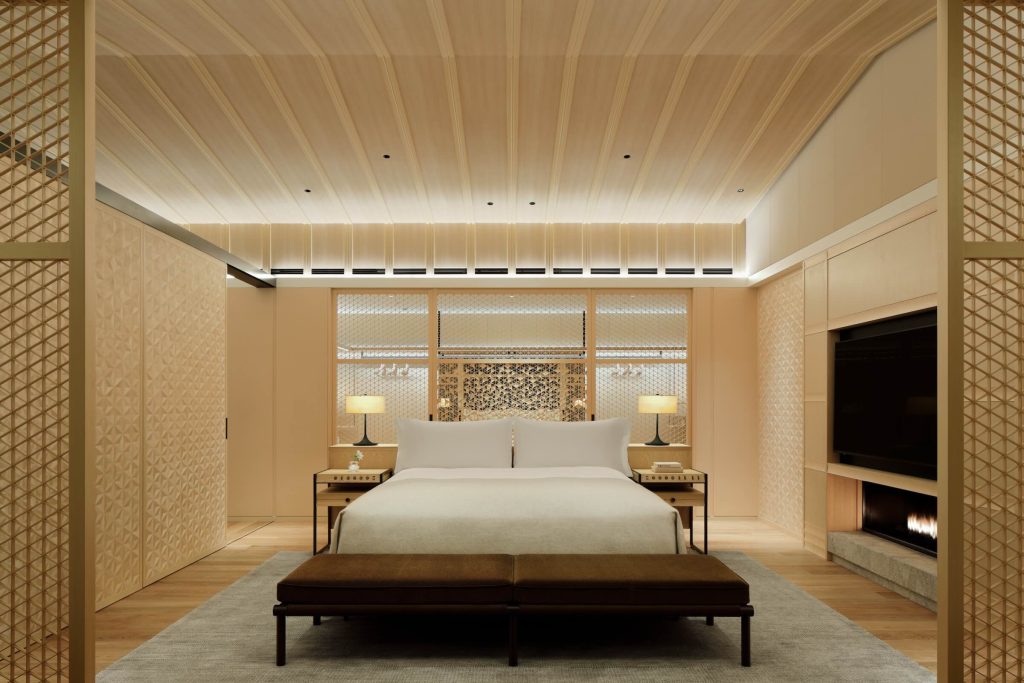

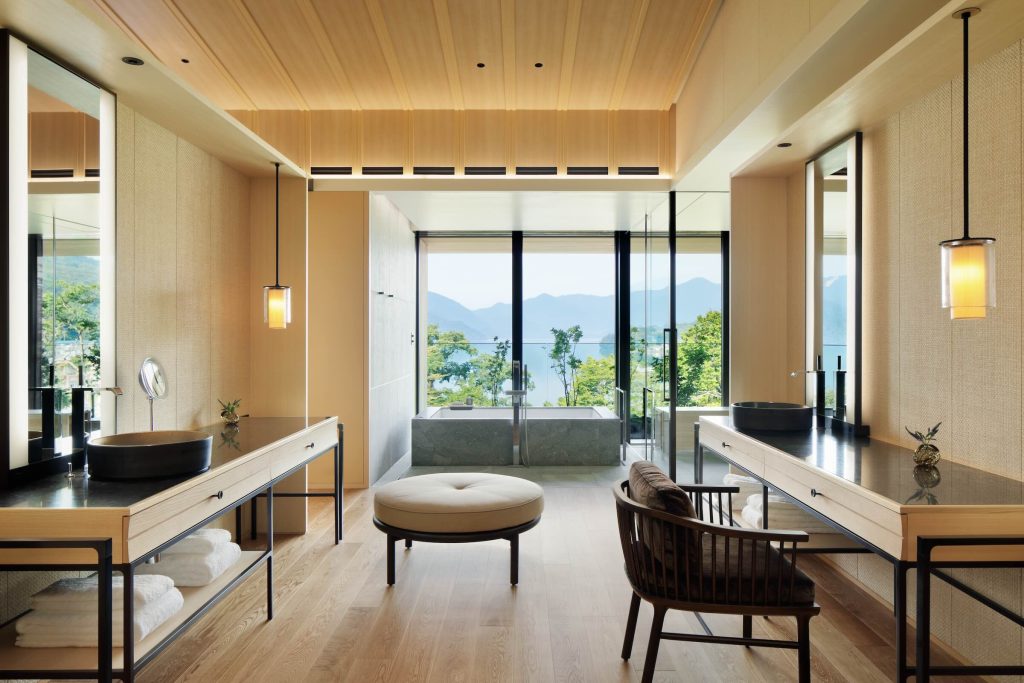



The best room?
Without a doubt, the 277-square-metre Ritz-Carlton Suite—it is generous in space and intricately designed, and even has a tatami-floored room for morning meditations or taking in the views over wagashi confections and green tea. Aside from a plush king-size bed, there’s also a private gym, a nook with a massage bed for spa treatments, a walk-in wardrobe, a balcony, and a service kitchen, not to mention four different areas for gathering and a dining table that sits up to eight. Against the long wall of floor-to-ceiling windows are five separate “rooms,” from office and sitting lounges to a bathroom with an oversized tub and sizeable shower, so no matter how you spend your time here, Lake Chuzenji and Mount Nantai are almost always in view. Delicate wood assembly techniques and woodcarving details lend a textural element to the neutral-toned interiors.
However, don’t discount the Lake Chuzenji View Room, with a private balcony. It’s not billed as a suite, but it could well be one. A sliding door separates the bedroom from the engawa-inspired indoor porch, which doubles as a sitting area; another divider fences off the genkan entryway.

Does the hotel have a standout perk?
More than just one. It’s the only Ritz-Carlton with onsen hot-spring bathing facilities—not counting Higashiyama Niseko Village, a Ritz-Carlton Reserve—so travellers seeking to luxuriate in healthful wellness are well catered to.
Curating one-of-a-kind experiences is kind of Ritz-Carlton’s thing and the Nikko property does this superbly by tapping into the abundant natural, spiritual, and cultural essence of the town. Nikko is an all-year destination, and the hotel-offered activities span morning zazen meditations, a furoshiki cloth-wrapping class, and a monk-led prayer-beads workshop to the more elusive Buddhist fire ceremony conducted at Chuzenji Temple and the mesmerising kagura dance, performed by Shinto priests and shrine maidens.
In springtime, take part in a Shugendo tradition and meditate under the cascades of a waterfall; in the summer, go fly-fishing. In the autumn, hike a forested trail to reach the Chanokidaira lookout point and gaze over Oku-Nikko’s postcard-perfect scenery, or come in the wintertime for backcountry cross-country skiing or thrilling ice-climbing excursions.
Being the Ritz-Carlton, the service, amenities, and guest personalisation are on point. Food-wise, the hotel also benefits from the agricultural powerhouse that is Tochigi prefecture and proudly features a plenitude of local seasonal produce on its restaurant menus.

Did they greet you by name at check-in?
Yes, though our first encounter with the Ritz-Carlton, Nikko team took place long before check-in. We were picked up from the Tobu-Nikko train station in the morning and the team made the most of our early arrival time by guiding us on an informal tour of the sights. By the time we made it to the property in Oku-Nikko around noon, we’d already received a very warm welcome.
Was a welcome drink ready and waiting when you arrived?
Yes. Aromatic Japanese tea was served to stave off the cold, but it was the snacks waiting in the room—and the accompanying notes—that really made an impression. We were welcomed with a box of plump, luscious, and perfectly ripe Tochi-Aika strawberries, a speciality of Tochigi. Every piece of fruit was bursting with sweetness, and promptly hoovered up.

Private butler for every room?
No private butler service, but you can request for a guest experience team member to look after you, if you so wish. At every turn, the switched-on staff lavished us with attention and care, making for a pampered and charming experience, so we didn’t feel the lack of a private butler, anyway.
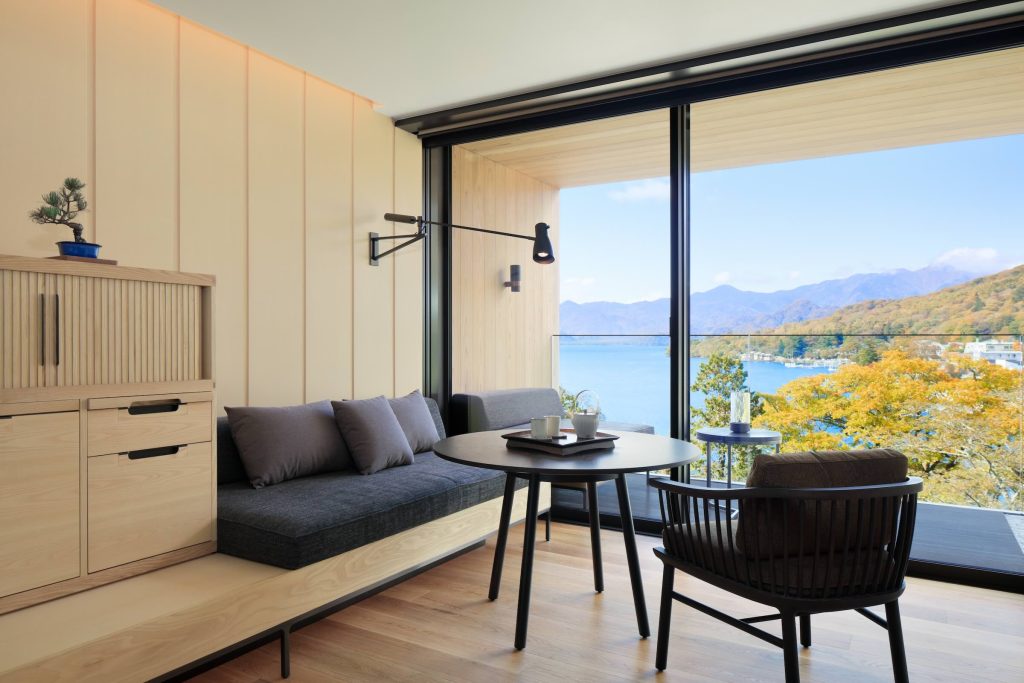
Is the sheet thread count higher than 300?
Yes, and double that for suites. Italian textile expert Frette supplies the bed linens; regular rooms are furnished with 400-thread-count bedding while suites are made up with 600-thread-count sheets for a heavenly sleeping experience. And let us not forget the location-specific Ritz-Carlton pillow menu, which, in Nikko, means that guests can rest their heads on a textured cushion stuffed with fragrant hinoki cypress wood chips, among others.

Is there a heated floor in the bathroom? What about a bidet?
Yes, the floor is heated, and you’ll need it, as Oku-Nikko can get bitingly cold in the autumn and wintertime. Being a hotel in Japan, it should come as no surprise that a Toto washlet is part and parcel of the bathroom facilities.
Are the toiletries full-sized?
Yes; the Ritz-Carlton, Nikko stocks full-sized Diptyque Philosykos toiletries—we are big fans of the scent. In the rooms, there is also a lightweight yukata robe, along with wooden sandals and a padded hanten winter jacket to wear on top during the colder months. Both garments are awfully chic; the hanten is produced by local craftspeople. Guests are encouraged to don the buttery-soft clothes for their visit to the onsen and even to dinner at The Japanese Restaurant.

Is there a private pool for the room’s exclusive use? How are the spa and gym?
Does a window-facing ofuro stone bathtub in your room count? Despite its water features and prime location on the shores of Lake Chuzenji, The Ritz-Carlton, Nikko does not, in fact, have private pools—or even a pool. However, the hotel has indoor and outdoor onsen facilities, as well as a spa room with a private rotenburo outdoor bath; all of them draw geothermal waters straight from the sulphurous hot springs of nearby Yumoto Onsen, known for its healing properties to combat fatigue and joint pain, and rejuvenate and moisturise skin.
As for the spa and gym, there’s a well-equipped fitness studio that’s open 24 hours, and you can expect the Ritz-Carlton Spa to have some special tricks up its sleeve to reflect the locale. Experiences include a 120-minute Nature Immersion therapy, a sake-lees-driven Revive & Renew treatment, and even a Restorative Rock ritual; the unique wellness programmes draw from Nikko’s geographic, natural, spiritual, and agricultural history to revitalise, balance, nourish, cleanse, and relieve tension. Guests can also spring for a private onsen experience, where a secluded rotenburo stands at the ready for an indulgent start to a luxurious treatment, followed by an essential oil massage. More traditional massage and facial options are also available, performed with Mikimoto and Espa cosmetics and skincare products, depending on the treatment.




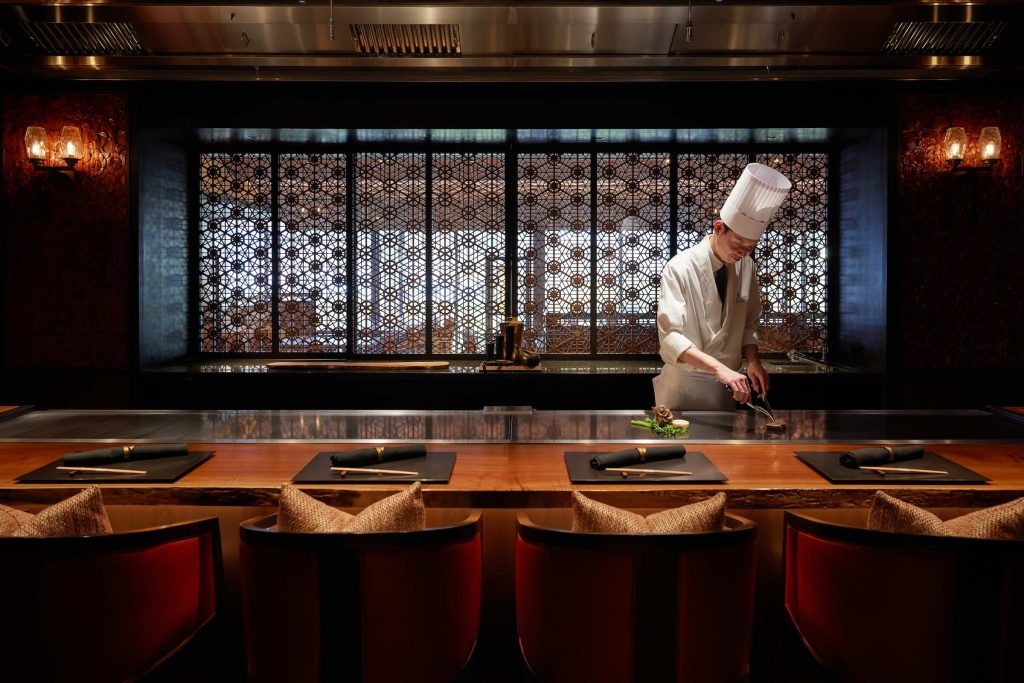
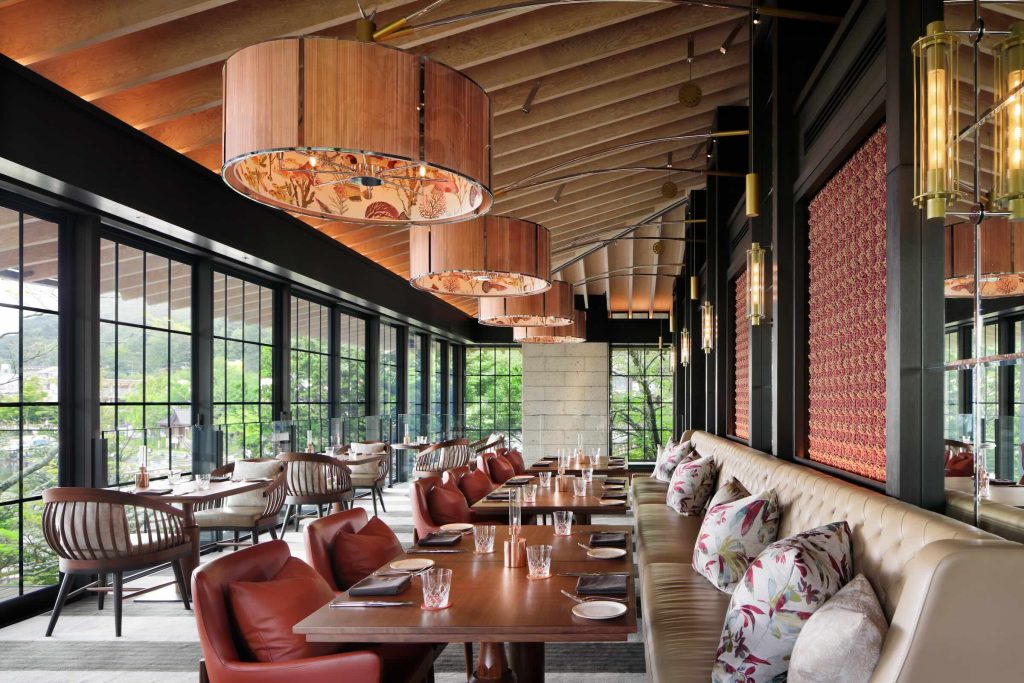


Is the restaurant worth its salt?
Yes. For sushi, teppanyaki, sukiyaki, shabu-shabu, and a kaiseki experience prepared with the region’s abundant range of produce, hit up The Japanese Restaurant. Its special Nikko-Gozen lunch menu is based on the favourite dishes of shogun Tokugawa Ieyasu, and the Momiji dinner menu reflects the seasonal harvest. Our autumnal meal featured Nasu-raised beef and eggs, Nikko rice, soy sauce, and miso, and udon, vegetables, and fruits from Tochigi. Yuba—bean curd skin—is a Nikko speciality and makes frequent appearances. Food aside, the restaurant itself is a work of art, decorated in intricate Nikko-bori woodcarvings, a traditional handicraft said to have its origins in the 17th century.
At Lakehouse, the Western restaurant, the best of Italian dining meets Japanese ingredients; the farm-to-table menu features such dishes as tagliatelle carbonara with Nikko egg and pancetta, risotto with Tochigi Yudai 12 rice and Japanese Akaito saffron, and indigo-seed-crusted Ashikaga Marc beef loin with Tochigi mango chutney and beef jus. Its interiors likewise reflect a melding of cultures to create an atmosphere reminiscent of countryside holiday homes, all fireplace, dark woods, and leather sofas. Order the pizza with Tochigi maitake mushroom, truffle, and mozzarella cheese—it’s a surprise hit. Light meals and afternoon tea can be taken in The Lobby Lounge and The Library.

Our favourite dining experience, however, had to be the spectacular in-room Japanese breakfast, a traditional way to start the day at most ryokan inns, except this one comes with unfettered, floor-to-ceiling views of Lake Chuzenji and Mount Nantai, standing at 2,486 metres. The wooden bento box is split into compartments and features chawanmushi egg custard, miso-marinated cod, grilled mackerel, stewed Tochigi beef and chicken, assorted sashimi, pickled vegetables, Nikko tofu, miso soup, and more on rotation. Local milks and yoghurts, pastries, and salad complete the package.

Do you want to spend Friday night in the lobby bar?
Yes. It has a vast Japanese whisky selection—you’ll find bottles from Nikka’s Yoichi and Miyagikyo distilleries, Sasanokawa Shuzo’s Asaka labels, and, of course, Suntory’s range of Yamazaki and Hakushu whiskies lining the shelves—as well as a cocktail menu inspired by Nikko. Mixologists Doi Sasagu and Anjan Khadka’s creations have been recognised in the Marriott International Cocktail Competition, with Khadka’s Komachi No Niwa cocktail winning the top prize. Interpreting the beauty of Oku-Nikko’s winter landscape and Japanese poet Ono no Komachi, the gin-and-Scotch-based drink is balanced with elderflower liqueur and yuzu notes. Also on the menu are the Rain & Moss Gin Fizz, made with astoundingly simple ingredients—gin, rain, and moss elements—and Strawberry Kingdom, with barley shochu, roasted green tea, and strawberries.
If you’re feeling peckish, there’s a “luxury” salt-seasoned yuzu ramen served at the Bar, too. Created in collaboration with Afuri, the artisanal ramen brand from Kanagawa, the light-bodied, golden-coloured chicken broth is pleasantly rich in flavour, building on a dashi of seafood and kelp. Afuri brings its house-made shio tare salt seasoning sauce to the mix, and the hotel rounds out the dish with a long list of Tochigi-grown toppings and ingredients, including grilled Nasu Tsutsuji pork, yolk-free wheat noodles made by century-old specialist Masakiya, and Miya yuzu from Tokoi Farm. It’s a masterful showcase of premium local produce, and tastes appropriately sublime. (Not only is the ramen in a separate class, but the dishware the noodles are served in is handmade in nearby Mashiko, a small town well-known for its distinctive pottery.)

Would you buy the hotel if you could?
One thousand times yes. One thing’s for sure—there’s no place quite like this in or around Nikko, so you’re in for a treat. Nikko’s slower, relaxed pace and nature-focused calendar of activities may not be for first-timers to Japan who are looking for the quintessential megalopolis experience, but seasoned travellers who have paid their dues to urban attractions will find much to love here. The Ritz-Carlton does an excellent job demonstrating why a trip to Nikko rivals a visit to the well-trodden trinity of Tokyo, Osaka, and Kyoto. Do yourself a favour and put this one on your next Japan travel itinerary.
Score: 9
What Our Score Means:
1–3: Fire your travel agent if they suggest you stay here.
4–6: Solid if you’re in a pinch—but only if you’re in a pinch.
7–8: Very good. We’d stay here again and recommend it without qualms.
9–10: Forget booking a week. When can we move in permanently?
All images courtesy of The Ritz-Carlton, Nikko.





